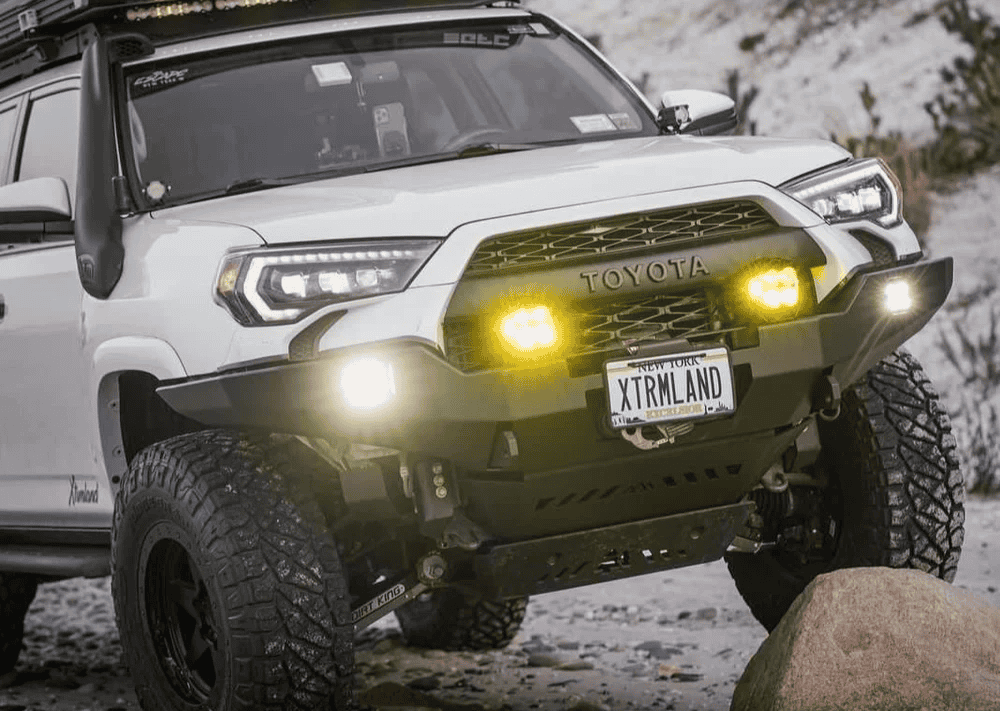Overland Vehicles

An overland build emphasizes range, self sufficiency, and comfort over days or weeks, not just a quick trail run. The Ford F 150 platform brings broad parts availability, modern safety tech, and a wide choice of engines and trims, making it a practical canvas for long distance travel on mixed terrain. Key is balance: retain highway manners while adding capability for remote tracks, washboards, and light technical sections. A well planned setup keeps weight low, protects critical components, and preserves payload for people, water, fuel, food, and recovery tools. The aim is a truck that feels confident on the interstate and composed on rough two track.
Bed length and cab configuration influence storage and weight distribution. A shorter wheelbase improves breakover while a longer bed makes gear organization easier. Four wheel drive with a low range is preferred for crawling and controlled descents; a rear locker or advanced traction control helps on loose climbs. Stock ground clearance varies by trim, and geometry improves with slightly taller tires and careful suspension tuning. Aerodynamics, tire pressure, and load planning all affect range and comfort.
Start with tires. All terrain patterns in a true LT construction add puncture resistance and sidewall strength. Many owners fit a 33 inch class size with minimal trimming, maintaining steering feel and braking performance. Moving to 35s typically requires a level kit and fender clearancing; it also alters gearing and puts more stress on components. Choose wheels with appropriate load ratings and sensible offset to keep scrub radius in check. Match tire pressure to load and terrain to maximize traction and comfort.
Suspension should carry the intended weight without harshness. Consider a matched package with tuned shocks, upgraded rear leafs or helper springs, and bushings that control motion under load. Add skid protection for the oil pan, transmission, transfer case, and fuel tank. Rock sliders guard the body and serve as a stable jack point. A quality front bumper accepts a winch and adds approach clearance, and rear bumpers can integrate recovery points. Round out the kit with a kinetic rope, soft shackles, traction boards, a shovel, and a full size spare.
Power is the heartbeat of camp life. Many newer trucks offer built in power systems that can run tools or a small camp kitchen; augment that with a secondary battery, DC to DC charging, and portable solar for steady output. Plan for fridge power, lighting, and device charging first, then consider induction cooking if your capacity allows. Water storage between 5 and 20 gallons covers drinking, cooking, and cleanup; secure tanks low and centered. Shade from a fixed awning and a compact table and chair kit can transform a dusty pullout into a comfortable base.
Every pound counts. Armor, racks, tents, and drawers add up quickly, eating into payload and raising the center of gravity. Weigh the truck fully loaded and compare to door jamb ratings. Place dense items low and forward of the rear axle, keep the roof as light as possible, and carry only the fuel and water you need for the route. This careful approach maintains braking, steering, and mechanical reliability while reducing driver fatigue over long days.
Approach the build in stages. Stage one focuses on tires, basic recovery gear, and essentials like a fridge and simple power. Stage two adds suspension, armor, and refined storage. Stage three is tailored for your travel style, such as communications, onboard air, or advanced electrical. Always test between stages, note what actually improves your trips, and trim the rest. Keep maintenance simple, protect critical wiring and hoses, and carry a tool roll and spares appropriate to your route.
A thoughtful Ford F 150 overland truck is less about bolt count and more about harmony. When tires, suspension, weight, and power are in sync, the result is a rig that drives quietly to the trailhead, tracks straight on washboards, and sets up camp without drama.
If you want a balanced, reliable outcome the first time, work with specialists who map gear to your payload, routes, and crew size. Explore our overland rigs to see how a full build comes together around real travel needs. When you are ready to dial suspension, armor, power, and storage for your F 150, our custom overland upfit process turns a plan into a refined truck. New to our shop and story? Learn more at why choose OZK Customs.
We design and build complete adventure rigs for long weekends or extended routes. From suspension tuning and protective hardware to onboard electrical and clean storage, we create trucks that feel planted on road and calm far off pavement. Visit us in Fayetteville Arkansas to plan your Ford F 150 overland truck with a team that lives this lifestyle and understands the details that matter.
Ready to turn your F 150 into a purpose built overland truck? Our team designs and installs suspension, protection, power systems, and storage that match how you travel. Tell us your route, payload, and goals, and we will spec a reliable build that drives beautifully on road and shines off grid. Start your build plan today.
ADDRESS:
6159 E Huntsville Rd, Fayetteville, AR 72701
PHONE:
(479) 326-9200
EMAIL:
info@ozkvans.com